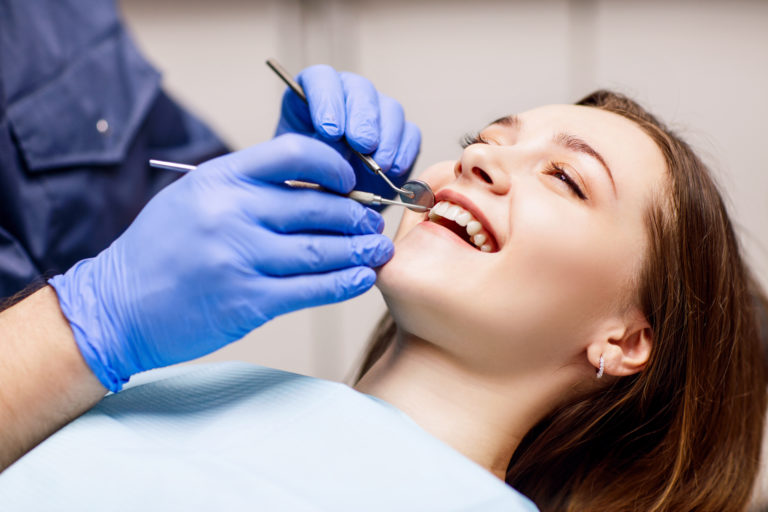The 6-Second Trick For Causey + Hall Orthodontics
Table of ContentsA Biased View of Causey + Hall Orthodontics6 Simple Techniques For Causey + Hall OrthodonticsThe Best Guide To Causey + Hall OrthodonticsIndicators on Causey + Hall Orthodontics You Need To KnowThe Of Causey + Hall OrthodonticsThe Buzz on Causey + Hall Orthodontics
What is the difference between a dental expert and an orthodontist? To respond to an inquiry that is frequently asked, both dental practitioners and orthodontists aid individuals get far better dental wellness, albeit in different ways. It helps to keep in mind that dentistry is a rather broad science with various medical expertises. All dental practitioners, consisting of orthodontists, treat the teeth, gum tissues, jaw and nerves.Orthodontists and dental experts both provide dental take care of patients. Orthodontists can operate in an oral office and provide the same therapies as various other dental professionals. So you can think about both medical professionals who deal with gum and teeth problems. The primary difference is that coming to be an orthodontist requires a specific specialty in treating the misalignment of the teeth and jaw.
An orthodontist is a dentist that has undergone training to concentrate on the diagnosis, prevention and treatment of irregularities in the jaw and teeth. Their training consists of remedying these existing conditions. They can likewise recognize prospective problems in teeth placement that might create when conditions are left untreated. Orthodontists can assist individuals of all ages - https://oqaoje2vk9j.typeform.com/to/xuU0Bj2M.
More About Causey + Hall Orthodontics
This consists of all the essential education and learning to end up being a general dental expert. According to the American Pupil Dental Organization (ASDA), it means you will require to have either a Doctor of Medication in Dentistry (DMD) or a Doctor of Oral Surgery (DDS). In other words, orthodontists require to complete oral school and after that get an orthodontics specialty education and learning.


When you have a healthy and balanced bite, you can speak, chew and consume correctly, thus boosting your lifestyle. Other than the orthodontist, we typically see aides dealing with these dental experts in their clinics. So, what is an orthodontist assistant called? They're appropriately called orthodontic assistants. They are specialized aides, and are trained to handle oral gear and offer preventative dental medical care.
Causey + Hall Orthodontics Things To Know Before You Get This
In addition, we offer flexible treatment schedules, adaptable repayment options and an enjoyable, satisfying experience.
An orthodontist is a dental professional trained to diagnose, protect against, and treat teeth and jaw irregularities. They fix existing problems and are educated to determine problems that may create in the future. Orthodontists collaborate with individuals of every ages, from children to adults. People typically link a best smile with good wellness.
, but not all dentists are orthodontists. They concentrate on two areas: How to properly and securely relocate teeth How to effectively guide growth in the teeth, jaw, and faceOnce an orthodontist has actually completed training, they have the option to come to be board licensed.
Causey + Hall Orthodontics for Dummies
Misalignment, or malocclusion, is the most typical factor individuals see an orthodontist. Malocclusion is normally treated with: Your orthodontist connects steel, ceramic, or plastic square bonds to your teeth.
Some people need a headgear to assist move teeth into line with stress from outside the mouth. A retainer is a personalized gadget that maintains your teeth in area.
They're usually used on children. They can produce additional space in the mouth without needing to draw teeth. If you have a significant underbite or overbite, you could Clicking Here need orthognathic surgical procedure (additionally called orthodontic surgery) to extend or shorten your jaw. Orthodontists make use of cables, surgical screws, or plates to support your jaw bone.
Causey + Hall Orthodontics Things To Know Before You Get This
During your very first orthodontic assessment, you'll likely have: An oral examPhotos taken of your face and smileDental X-raysPanoramic (360 degree) X-rays of your face and headImpressions to develop molds of your teethThese tests will help your orthodontist understand exactly how to wage your treatment. An orthodontist is a dentist that's had training to treat your teeth and jaw.
Orthodontists might do surgical procedure, exams,X-rays,and more to assist you achieve a more comfortable, much healthier smile. An orthodontist is concentrated on your bite, so something like a damaged tooth would certainly be dealt with by a dental expert. Orthodontists are dental practitioners however not all dental experts are orthodontists. Orthodontists are concentrated on your bite, or the means your teeth fit together, and the straightness of your teeth.
Little Known Facts About Causey + Hall Orthodontics.
What exactly does an orthodontist do? Orthodontists are oral experts that focus on fixing abnormalities in the teeth and jaws.

Clear aligners, like Invisalign, are a preferred alternative for people looking for a more discreet therapy choice. These removable trays are personalized to progressively change the teeth's position. Headgear may be used in conjunction with braces or aligners to apply additional targeted pressures, especially for fixing jaw inconsistencies. In situations of narrow jaws, palatal expanders can be utilized to develop space for appropriate tooth positioning.